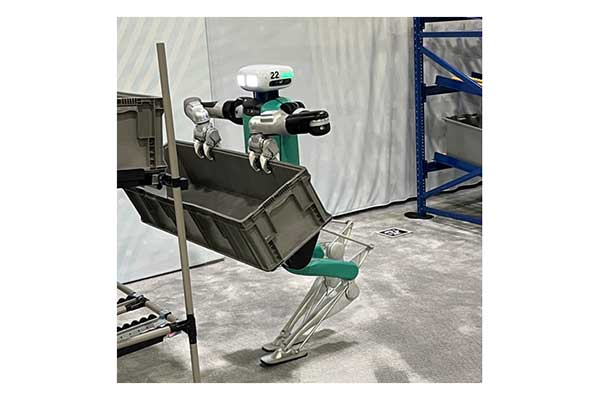Gartner foresees sizeable uptake for next-gen humanoid robots
Research note poses likelihood that by 2027, 10% of all intralogistics smart robots sold will be humanoid robots.
When will intelligent humanoid robots begin to make an impact in intralogistics and material handling, beyond a few pilot programs? According to Gartner, that time may be sooner than expected.
The analyst company, in a recent research note on supply chain trends to watch this year, estimates that by 2027, 10% of all intralogistics smart robots sold will be next-generation humanoid robots. Gartner places various types of intelligent robotic platforms—both mobile and fixed position systems—under the intralogistics smart robot umbrella.
According to Dwight Klappich, a VP and fellow with Gartner, the prediction is meant as a thought-provoking planning assumption of what may soon be possible. The next generation of humanoid bots are from startups who are only now starting to have some companies test their bots in pilot programs. In an interview with Modern, Klappich explained that while today, use of these humanoid robots is still in the “embryotic” stage, there is industry interest in using next-gen humanoid bots to automate tasks which aren’t well suited to traditional fixed automation or smart robotic cells. Given this market need, and the fact that some big companies are already testing these solutions, this emerging segment could take off quickly, Klappich said.
A key attraction of smart humanoid robots is their potential to be applied to different materials handing tasks more flexibly than traditional smart industrial robots, which are often set up in a robotic cell and do the same thing all day, like palletizing or item picking. In short, the ace card up the collective sleeve of these next-gen humanoids is their potential for adaptability.
“The allure of the next generation humanoid robots is that I could be assigning one to do one process it the morning, and in the afternoon, that same robot can be repurposed at another part of the warehouse to do something different,” Klappich says. “That adaptability is enabled through the intelligence that is behind these next-generation humanoid robots,” Klappich says.
Multiple startup vendors offer humanoid form-factor robots that use artificial intelligence and vision to know how to grasp and manipulate items like totes. These include Agility Robotics, Apptronik, and Figure.
For Gartner’s 10% prediction to take hold, says Klappich, these robots will have to get faster in their movements, and their fine dexterity in terms of grasping and manipulating objects will need to further improve to open up more use cases. On the plus side, says Klappich, the cost of robotics componentry is falling, which helps make humanoid bot solutions more affordable. There are also some high-profile companies testing humanoid form factor robots, including Amazon, which is testing the Digit robot from Agility Robotics.
“I think the use of these robots will start with big companies that have a more risk-tolerant culture for technology investments, and who are the ones that are already experimenting with some these robots,” Klappich says. “Then over time, I think we’ll the use of these robots expand.”
It is unlikely that companies will deploy them at scale in the hopes of replacing all human labor in an operation, adds Klappich. Instead, the hope is that can be used to automate some tasks that are repetitive, dull, or prone to injuries, and that exhibit a high turnover rate if done manually. Even if humanoid robots do begin to catch over the next few years, it’s likely that humans will still be needed for roles like exception management, inventory resolutions, managing the automation and robotics, and other roles that involve higher-level decision making, Klappich adds.
“I don’t think the interest here is to replace all people—it is that operations are having trouble finding and retaining enough people to carry out all these tasks manually,” Klappich says.
Gartner’s note with the planning assumption about humanoid robots, “Top Trends in Supply Chain Technology 2024,” also foresees growing use of AI-enabled vision systems that autonomously capture and interpret image data, so that operations know what they actually have in inventory in their racks, and where each pallet is at. While some of this technology makes use of drones, others use mobile robots with vision towers, or special vision arrays at key points like receiving. The Gartner note’s assumptions section predicts that by 2027, 50% of companies will have started leveraging AI-enabled vision systems to replace traditional scan-based cycle counting.
The appeal with AI-enabled vision solutions for inventory monitoring, says Klappich, is to maintain extremely high accuracy at the warehouse management system (WMS) level, without all the manual scanning needed for traditional cycle counting, or periodic inventory audits, which again, consume labor. “The thinking is why tie up several people doing traditional cycle counts when they can be doing something else, so there is interest in using this technology to automate that cycle count process, and there are other potential uses for it as well, such as automatically capturing data during receiving, or to spot issues with ergonomics and safety, or to analyze if goods are being packed correctly.”













